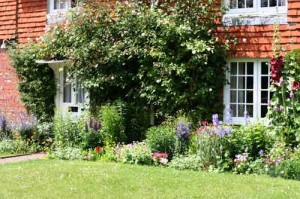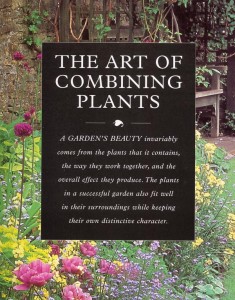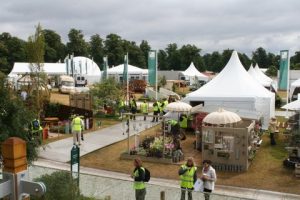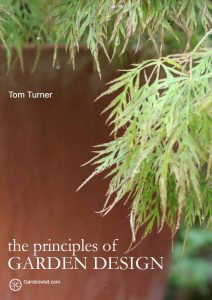 It’s worth looking to see what Wikipedia and Britannica have to say on this question. And I have to say that the Wiki entry on landscape architecture is a lot more useful than the Britannica entry on garden and landscape design. Britannica only let you have a quick glimpse at their text before a big black screen tries to sell you a subscription. But you have enough time to discover that the text is badly written garbage. Here is a sample: “Efforts to design gardens and to preserve and develop green open space in and around cities are efforts to maintain contact with the original pastoral, rural landscape. Gardens and designed landscapes, by filling the open areas in cities, create a continuity in space between structural urban landscapes and the open rural landscapes beyond. ”
It’s worth looking to see what Wikipedia and Britannica have to say on this question. And I have to say that the Wiki entry on landscape architecture is a lot more useful than the Britannica entry on garden and landscape design. Britannica only let you have a quick glimpse at their text before a big black screen tries to sell you a subscription. But you have enough time to discover that the text is badly written garbage. Here is a sample: “Efforts to design gardens and to preserve and develop green open space in and around cities are efforts to maintain contact with the original pastoral, rural landscape. Gardens and designed landscapes, by filling the open areas in cities, create a continuity in space between structural urban landscapes and the open rural landscapes beyond. ”
The Wiki entry ( at 10.40 GMT on 1.7.2008) is so much better, or at least so much closer to my own view, that I suspect the author of having made good use of the Gardenvisit.com website. It states that: “Both arts are concerned with the composition of planting, landform, water, paving and other structures but: (1) garden design is essentially concerned with enclosed private space (parks, gardens etc), (2) landscape design is concerned with the design of enclosed space, as well as unenclosed space which is open to the public (town squares, country parks, park systems, greenways etc)”
Compared to Europeans, Americans tend to be a bit sniffy about garden design. They see it (as in the Britannica quotation above) as a subsection of garden design. This makes garden designers inferior people, because they can only do a fraction of the work undertaken by landscape architects. The American Society of Landscape Architects (ASLA) only introduced a professional award for garden design, actually called “residential design” in 2005: ” The ASLA 2005 Professional and Student Awards program features a new category—Residential Design—drawing more than 120 entries in its inaugural year. Cosponsored by Garden Design magazine, awards in this new category will be presented on Monday, October 10, during the ASLA Awards Ceremony. A special luncheon honoring all award recipients, their clients, and professors will be held following the ceremony.”
Personally, I see garden design as much closer to a fine art than landscape architecture. Art is for art’s same and gardens are for garden’s sake. Landscape architecture is often for a public or private body with a shedful of axes to grind. It is similar to the distinction between painting and graphic design or between sculpture and product design.



